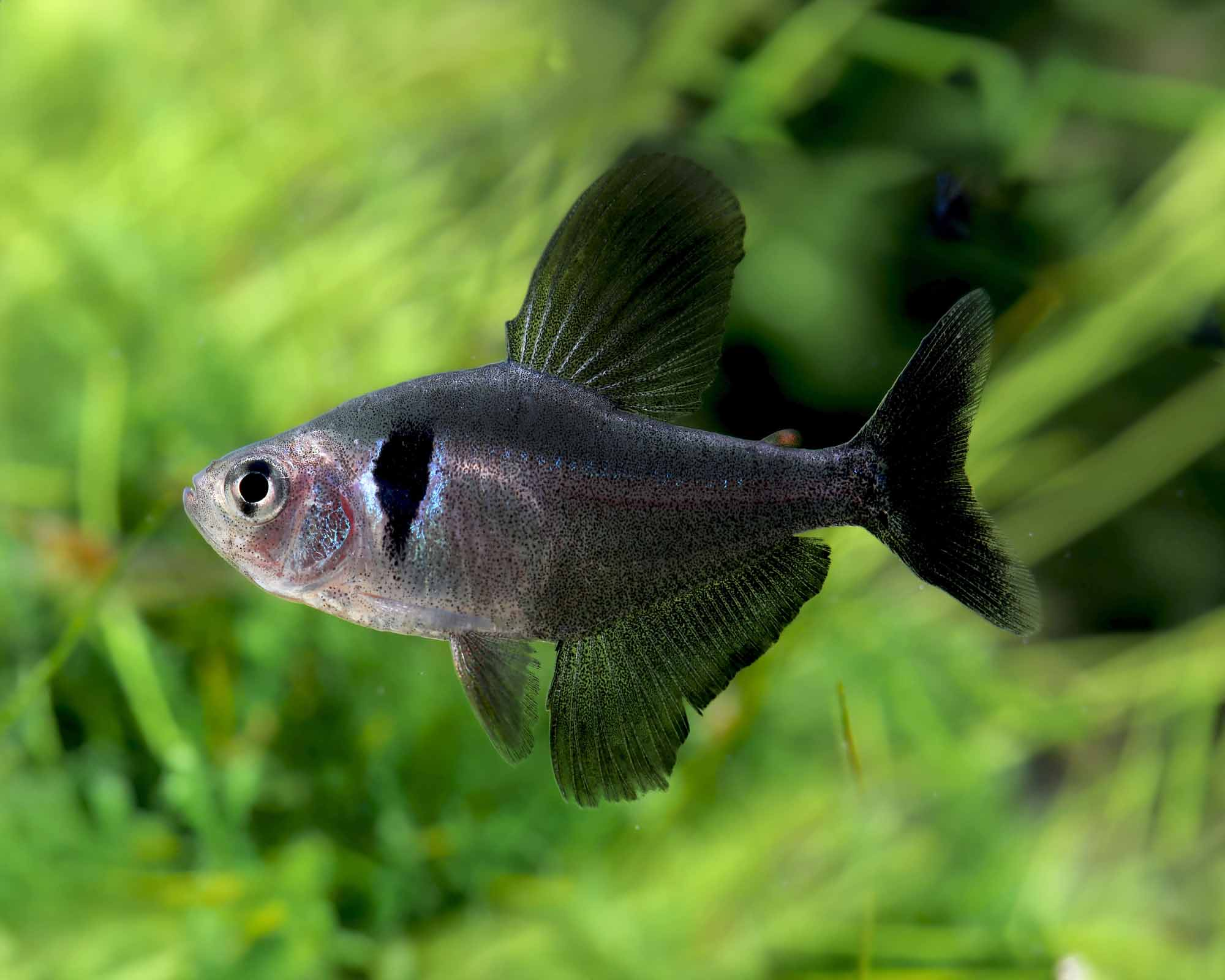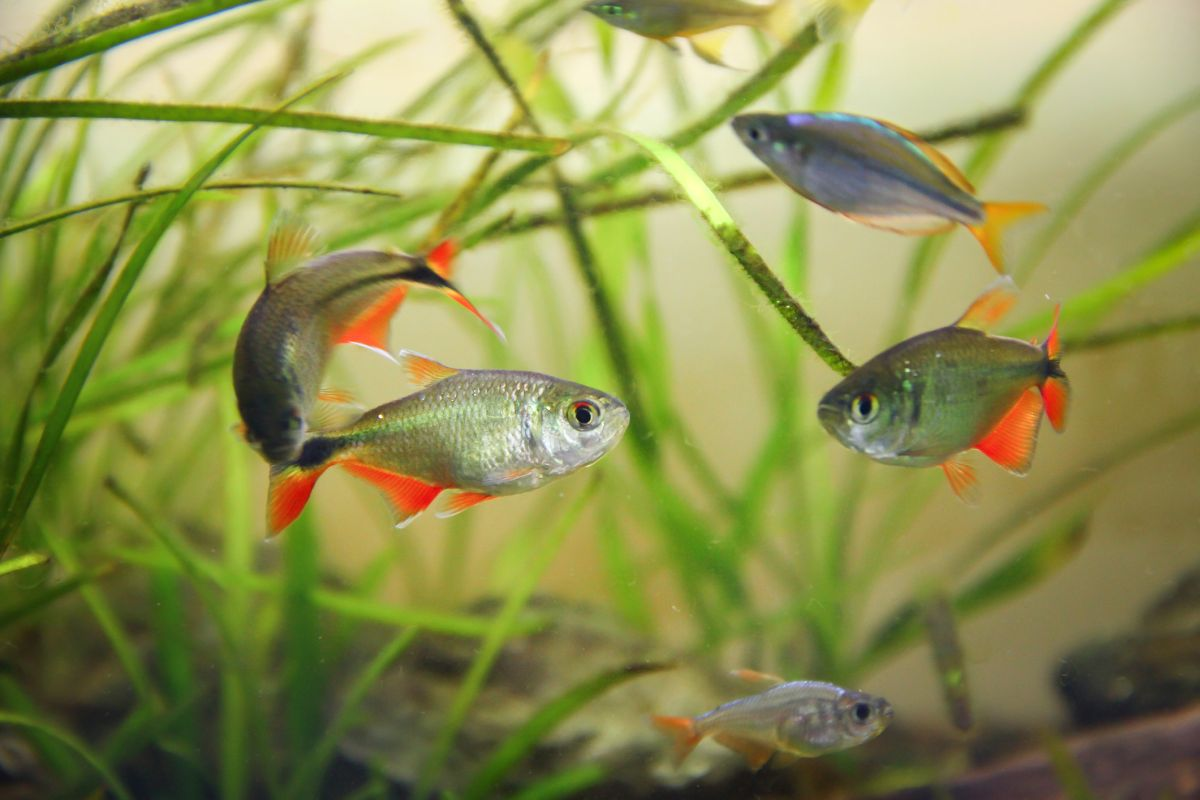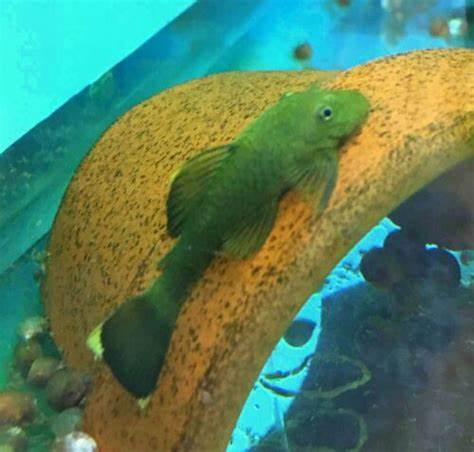The Electric Blue Acara (Andinoacara pulcher) is a striking and popular freshwater cichlid species known for its vibrant blue coloration and relatively peaceful demeanor. Originating from Central and South America, this fish has captured the attention of aquarists worldwide due to its beauty, hardiness, and adaptability to a wide range of aquarium conditions. This article will provide an in-depth look at the Electric Blue Acara, covering its physical characteristics, natural habitat, aquarium care, behavior, breeding, and more.
Physical Characteristics
The Electric Blue Acara is renowned for its stunning appearance, characterized by its vivid blue hues and elegant body shape. Here are some key physical features:
- Coloration: The Electric Blue Acara is famous for its iridescent blue coloration that can range from light sky blue to deep electric blue, depending on lighting and water conditions. The body is adorned with subtle black markings on the face and a hint of gold or yellow near the gill covers. This vibrant color makes it a standout in any aquarium.
- Body Shape: This cichlid has a robust, slightly elongated body with a broad head and a slightly tapered tail. The dorsal fin is long and continuous, extending from just behind the head to the base of the tail, while the anal fin mirrors this in shape and size.
- Size: Electric Blue Acara are medium-sized cichlids, with adults typically reaching about 6 to 8 inches (15 to 20 cm) in length. Their size makes them suitable for medium to large aquariums.
- Sexual Dimorphism: Males are generally larger than females and may have more pointed dorsal and anal fins. Females tend to be rounder, especially when gravid (carrying eggs). However, sexing these fish can be challenging, especially when they are young.
Natural Habitat and Distribution
The Electric Blue Acara is native to the slow-moving rivers, streams, and lakes of Central and South America, particularly in regions of Colombia, Venezuela, and Trinidad and Tobago. In the wild, they inhabit environments with abundant vegetation, submerged roots, and leaf litter.
- Water Parameters: In their natural habitat, Electric Blue Acara are found in soft to moderately hard water with a pH range of 6.0 to 7.5. The water temperatures typically range from 72°F to 82°F (22°C to 28°C), which can vary depending on the specific region.
- Environment: These fish prefer environments with plenty of hiding spots, such as rocks, driftwood, and dense plant growth. The slow-moving waters they inhabit are often slightly murky, providing a sense of security and natural cover.
Aquarium Setup and Care
Electric Blue Acara are hardy and adaptable, making them relatively easy to care for in a home aquarium. However, to ensure their well-being and bring out their best colors, it’s important to replicate their natural environment as closely as possible.
- Tank Size: A minimum tank size of 40 gallons is recommended for a single Electric Blue Acara. However, if you plan to keep a pair or a community of fish, a larger tank of at least 55 to 75 gallons is preferable. Providing ample space reduces territorial disputes and stress.
- Water Parameters: Electric Blue Acara thrive in a pH range of 6.0 to 7.5, with water hardness between 4 to 20 dGH. The ideal water temperature for these fish is between 72°F and 82°F (22°C to 28°C). Regular water changes and efficient filtration are essential to maintain water quality and prevent disease.
- Substrate and Décor: A soft, sandy substrate is ideal, as these fish enjoy digging and foraging. Decorate the tank with plenty of rocks, driftwood, and live plants to create hiding spots and replicate their natural habitat. Providing caves or hollow decorations will also give them a place to retreat, especially during breeding.
- Lighting: Moderate lighting is sufficient for Electric Blue Acara. Too much light can cause stress and may wash out their vibrant coloration, so it’s best to provide areas of shade with plants or floating decorations.
- Filtration and Water Movement: While these fish prefer slow-moving water, a good filtration system is important to keep the water clean and well-oxygenated. An adjustable filter that allows you to control water flow is ideal.
Diet and Feeding
Electric Blue Acara are omnivorous and have a varied diet in the wild, consisting of small invertebrates, plant matter, and detritus. In captivity, they are not particularly fussy eaters and will accept a wide range of foods.
- Staple Diet: A high-quality cichlid pellet or flake food should form the basis of their diet. These foods are specifically formulated to provide the necessary nutrients for their health and vibrant coloration.
- Supplementary Foods: To replicate their natural diet, supplement with live or frozen foods such as brine shrimp, bloodworms, daphnia, and krill. These protein-rich foods are especially beneficial during breeding.
- Vegetable Matter: Electric Blue Acara also benefit from the inclusion of vegetable matter in their diet. Blanched spinach, peas, or spirulina-based foods can be offered occasionally.
- Feeding Schedule: Feed them small amounts two to three times daily, ensuring that all food is consumed within a few minutes to prevent overfeeding and maintain water quality.
Behavior and Temperament
One of the most appealing aspects of the Electric Blue Acara is its relatively peaceful nature, especially when compared to other cichlids. They are generally non-aggressive and can be kept in community tanks with other similarly sized, non-aggressive fish.
- Community Tank Compatibility: Electric Blue Acara can coexist with a variety of peaceful fish species, including tetras, barbs, gouramis, and other non-aggressive cichlids. Avoid keeping them with very small fish that could be mistaken for food, or with highly aggressive species that may bully them.
- Territorial Behavior: While Electric Blue Acara are generally peaceful, they can become territorial, especially during breeding. Providing ample space and hiding spots can help reduce territorial disputes.
- Activity Level: These cichlids are active and curious, often seen exploring their environment and interacting with other tank inhabitants. They are known for their engaging personalities, and some may even recognize their owners.
Health and Lifespan
With proper care, Electric Blue Acara can live for 8 to 10 years in captivity, making them a long-term commitment for aquarists. They are generally hardy fish but can be susceptible to common freshwater diseases if not kept in optimal conditions.
- Common Health Issues: Electric Blue Acara can be prone to diseases such as Ich (white spot disease), fin rot, and parasitic infections if water quality is poor. Regular water changes, a balanced diet, and avoiding overcrowding can help prevent these issues.
- Signs of Good Health: A healthy Electric Blue Acara will display vibrant colors, active behavior, and a good appetite. Regular observation is key to catching any potential health problems early.
Conclusion
The Electric Blue Acara is a stunning, peaceful, and relatively easy-to-care-for cichlid that offers both beauty and personality in a home aquarium. Their vibrant coloration, engaging behavior, and compatibility with a wide range of tankmates make them a popular choice among aquarists of all experience levels. With the right care and attention, Electric Blue Acara can provide years of enjoyment and even the rewarding experience of breeding them in captivity.




Reviews
There are no reviews yet.